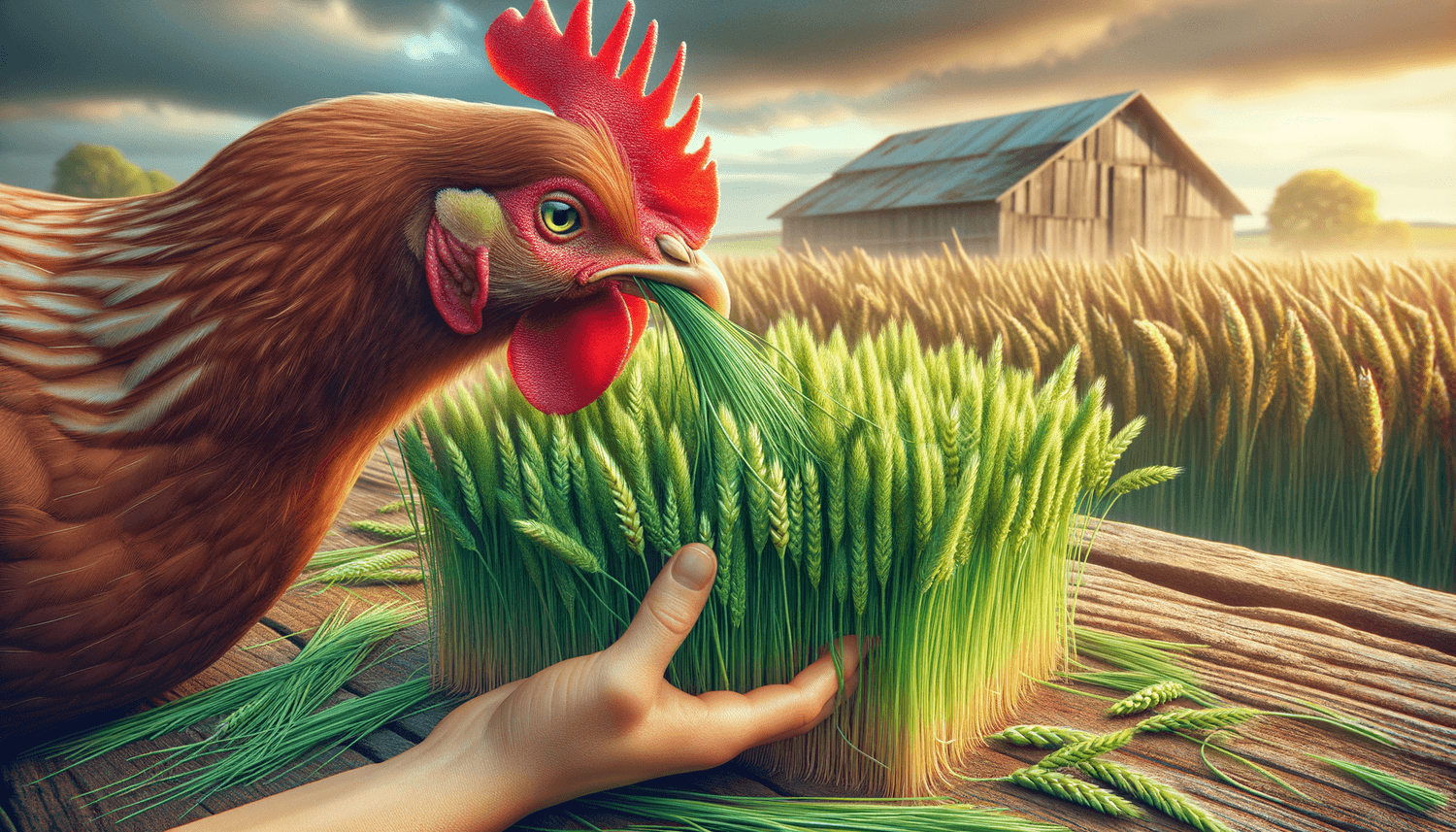Chicken lovers and wheatgrass aficionados, unite! 🎉 We all know that chickens can be pretty adventurous when it comes to their diet, but can they safely chow down on a tasty bit of wheatgrass? In this action-packed, cluck-tastic blog post, we’ll delve into the world of leafy greens for our feathery friends. From exploring whether or not chickens can actually eat wheatgrass, to discussing the importance of a balanced diet, the benefits and risks, nutritional value, and even how to serve up the wheatgrass for your birds in the most delightful way, we’ve got it all covered. So, fluff up your feathers and let’s get ready to rumble… in the garden!
Can chickens eat wheatgrass?
Yes, chickens can safely eat wheatgrass. Wheatgrass is a nutritious and palatable treat for your backyard flock, as it provides essential vitamins, minerals, and fiber. Including wheatgrass in their diet not only enhances their overall health but also adds variety to their daily meals.
Chickens need a balanced diet, just like humans
Just as it is essential for us humans to maintain a balanced diet, so too do our beloved backyard chickens. The foundation of a chicken’s diet should be high-quality chicken feed, which ensures they receive the necessary nutrients for optimal health, growth, and productivity. This chicken feed should typically make up around 80-90% of their overall diet as it contains the right mix of proteins, carbohydrates, fats, vitamins, and minerals tailored specially for their needs.
With the primary nutritional needs covered, the remaining 10-20% of a chicken’s diet can consist of treats like fruits, vegetables, and yes, even wheatgrass. Treats not only offer variety and enjoyment to their meals, but they can also provide the chickens with important nutrients not found in their regular feed. Just remember to practice moderation when feeding treats to avoid upsetting the balance in their diet, which could lead to health issues down the line.
Nutritional value of wheatgrass for chickens.
Wheatgrass is indeed a valuable addition to a chicken’s diet. It is abundant in essential nutrients such as vitamins, minerals, and fiber, which greatly contribute to the overall health and well-being of your beloved flock. Wheatgrass is particularly rich in vitamins A, C, and E, which promote strong immune systems, enhanced vision, and improved cellular function in chickens. It also contains a good dose of B vitamins, which help to support metabolism, energy production, and the nervous system.
Minerals in wheatgrass play an equally important role in your chicken’s health. Among them, calcium aids in the formation of strong eggshells, whereas iron ensures optimal blood health, and potassium helps maintain electrolyte balance. Moreover, the high fiber content of wheatgrass supports digestion and helps keep a chicken’s gut happy and functioning well. Wheatgrass is also known to have high water content, which provides chickens with additional hydration, especially during hot summer months.
Adding wheatgrass to their diet not only keeps chickens engaged and entertained as they forage, but it also allows them to indulge in a natural behavior that’s essential for their mental well-being. Thus, wheatgrass helps improve the quality of life for your chickens on various levels, making it an excellent treat for them to enjoy now and then.
Nutrition table of wheatgrass for chickens.
| Information | Description |
|---|---|
| Nutritional Value | Rich in vitamins A, C, E, and B vitamins; minerals such as calcium, potassium, and iron; and high in fiber |
| Suggested Serving Size | A handful of fresh wheatgrass for a small flock, larger flock can have access to a patch |
| Safe Feeding Practices | Wheatgrass should make up only a portion of the 10-20% treats in their diet, practice moderation |
| Preparation | Wash and chop into small pieces or provide a whole patch for foraging |
| Potential Risks | Overconsumption can lead to vitamin overdose and disrupt the dietary balance |
| Hydration | High water content provides additional hydration for chickens, especially during hot months |
| Digestion | High fiber content supports digestion and overall gastrointestinal health |
| Seasonal Availability | Wheatgrass can typically be grown year-round, especially in indoor trays, providing easy access |
| Other Benefits | Foraging in wheatgrass improves chickens’ mental well-being and encourages natural behavior |
Growing and harvesting wheatgrass for your chickens
One of the great benefits of wheatgrass is its ease of cultivation, making it a popular choice for year-round, in-home growth. To grow wheatgrass for your chickens, simply follow these steps:
- Start by soaking wheat seeds in water for about 8-12 hours.
- Drain the water, rinse the seeds, and let them sit in a jar or container for another 8-12 hours.
- Spread a layer of potting soil or compost in a tray and moisten it with water.
- Spread the sprouted seeds evenly across the tray and press them gently into the soil.
- Cover the seeds with a thin layer of soil or compost and water them well.
- Place the tray in a location with good air circulation and indirect sunlight. Mist the seeds daily to keep them moist.
- Within 7-10 days, your wheatgrass should be several inches tall and ready for harvest.
- Harvest the wheatgrass by cutting off the green leaves at the base, and chopping them up before feeding them to your chickens.
By growing wheatgrass indoors or in a protected area, you can provide your chickens with fresh, nutritious greens throughout the entire year.
Final thoughts on chickens and wheatgrass
As we’ve seen, wheatgrass is not only safe but also highly nutritious for chickens. Providing it as a treat, alongside other fruits and vegetables, creates a varied and healthy diet that contributes to their overall health and happiness. Remember to always practice moderation when offering treats, ensuring the majority of their diet comes from high-quality chicken feed. Enjoy watching your feathery friends delight in their meal times and reap the benefits of well-balanced backyard chicken nutrition!

















